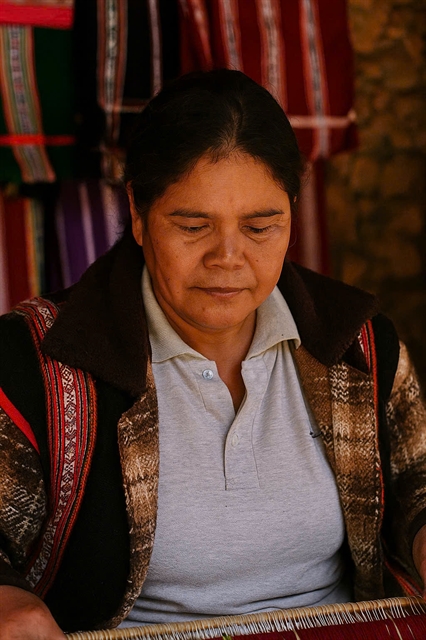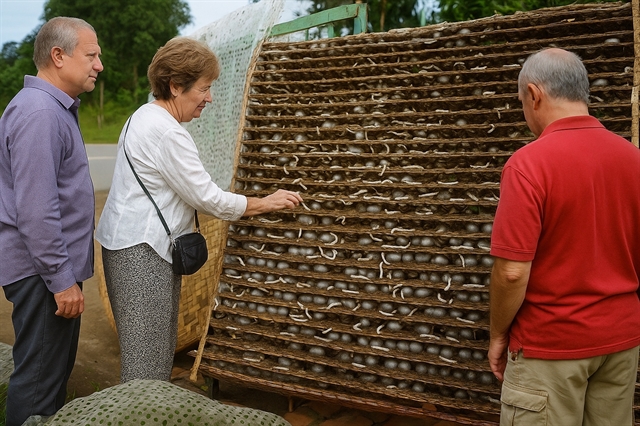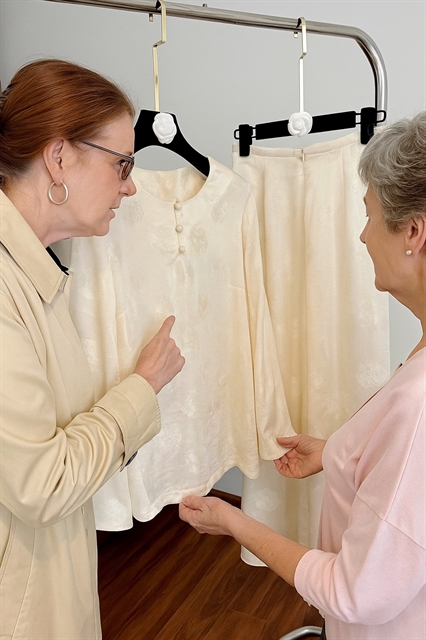Weather:
- Ha Noi 26oC
- Da Nang 28oC
- Ho Chi Minh 28oC

Bảo Lộc’s silk industry faces critical challenges in preserving its heritage and revitalising production amid declining raw material quality, a shrinking skilled workforce, and competition from cheaper, mass-produced fabrics.
Climate change has made mulberry cultivation less predictable, while younger generations are increasingly drawn to urban employment.
Yet, for those who remain at the looms, the work is more than a livelihood—it is a link to their ancestors, a cultural identity, and a craft that demands both artistry and resilience.
Việt Nam News spoke with K’Mai – an ethnic K’Ho master artisan who has been preserving Bảo Lộc’s silk heritage for over 30 years – about the challenges and opportunities facing the craft as it strives to survive and thrive in a changing world.
Can you tell us about the history of traditional silk weaving in Bảo Lộc and how it has shaped the community?
Certainly, Bảo Lộc has long been known as the "silk capital" of Việt Nam. The craft was introduced here in the 1950s when sericulturists from northern and central regions brought mulberry cultivation and silkworm rearing to this highland area.
The cool climate and fertile soil made it an ideal place to grow mulberry trees and sustain sericulture.
During the 1960s and 1970s, small-scale silk weaving workshops began to appear, primarily serving local markets.
After the national reunification in 1975, the industry expanded with the formation of cooperatives and state enterprises focused on silk production. By the late 1980s and 1990s, Bảo Lộc had become a major silk supplier not only for domestic use but also for export to Asia and Europe.
This history is more than just dates and facts—it is the foundation of our community’s identity.
Many families, including mine, have passed down the skills and passion for silk weaving through generations. The name “B’Lao silk” carries with it a legacy of craftsmanship, resilience, and pride that defines who we are.
When did you first take up silk weaving, what inspired you to start, and how has the craft changed over time?
I am a K’Ho ethnic, born and raised in Đamb’ri Commune, Bảo Lộc.
My family has been cultivating mulberry and raising silkworms since my grandmother’s time, so I grew up surrounded by this tradition.
I first learnt to reel silk, set up the loom, and weave my own cloth at the age of 13. More than 30 years later, I am still at the loom every day.
What keeps me devoted to this craft is not just the need to earn a living, but a deep connection to my family and community.
I weave not only for sale but also to create scarves and traditional garments for K’Ho festivals.
There is a special joy when a piece of fabric comes alive with the patterns and colours I have carefully chosen.
The craft itself has evolved over the years.
In the past, we used wooden handlooms and could only produce two or three metres of cloth after a full day’s work. Today, semi-automatic looms help increase output, but to create the traditional patterns, I still watch every thread closely.
For dyes, I blend forest plant extracts with industrial dyes to keep the colours vibrant and long-lasting, preserving the essence of our heritage while embracing new techniques.

What are the differences between traditional silk weaving and mass-produced silk, and what advantages does traditional weaving hold?
Traditional silk and mass-produced silk differ greatly in both process and philosophy. Industrial silk is produced by big machines that prioritise speed and volume.
The fabrics are often uniform and made to meet mass-market demands, which can result in a loss of unique character and craftsmanship.
By contrast, traditional weaving is a labour-intensive art.
Each piece is crafted by hand on manual or semi-automatic looms, where the weaver carefully controls every thread and pattern.
This method allows for intricate designs, subtle colour variations, and a tactile quality that machines simply cannot replicate.
One key advantage of traditional weaving is its cultural significance.
The patterns and techniques are passed down through generations and often tell stories or reflect the identity of ethnic groups like the K’Ho.
This imbues each fabric with a unique soul and heritage.
Moreover, traditional silk weaving is more sustainable.
It uses natural dyes from forest plants and locally sourced materials, with far less waste compared to industrial methods.
It supports local communities and preserves the skills of artisans, providing meaningful employment and fostering pride in cultural heritage.
While machine-made silk meets global demand for affordable textiles, traditional silk offers something irreplaceable—a connection to history, nature, and human creativity that resonates deeply with consumers seeking authenticity.

What challenges do you face, what support do you need, and how can Bảo Lộc silk be preserved and developed?
The challenges are many. Sometimes the quality of raw silk is not consistent, especially when the weather fluctuates unpredictably.
Many young people in the village prefer jobs in the city rather than spending long hours at the loom, which makes it harder to maintain skilled artisanship.
Handcrafted products also struggle to compete with cheaper industrial fabrics, so I focus on maintaining high quality and targeting niche markets.
In terms of support, I hope the authorities will offer more vocational training classes to help young people appreciate the value of silk and learn the craft.
Access to low-interest loans would also help us invest in better equipment, and more fairs and exhibitions would promote K’Ho silk nationwide.
Above all, preserving the soul of the traditional silk is vital. Buyers are not just purchasing fabric—they are embracing the story of the person who made it.
If we weave with heart and passion, this tradition will endure and be treasured for generations to come. VNS

